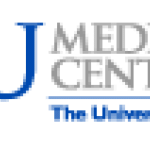- 行业: Medical
- Number of terms: 351
- Number of blossaries: 0
- Company Profile:
A technique in which an egg is fertilized outside the body. For use in assisted reproduction, the fertilized egg is implanted in the uterus at approximately three to four days of cell division for the purpose of development into a baby. For use in research, the fertilized egg is maintained in cell culture until it develops into the blastocyst stage at approximately five days of cell division and stem cells can be removed.
Industry:Medical
A gelatinous substance within the umbilical cord recently shown to be a source of potentially pluripotent stem cells.
Industry:Medical
The master cells of the body that contain all the genetic information needed to create all the cells of the body and the placenta. Totipotent cells exist only in the first three to four divisions of the fertilized egg and give rise to the next stage of development — the pluripotent stem cells.
Industry:Medical
Stem cells that have been growing in cell culture for six or more months without becoming specialized and appear genetically normal.
Industry:Medical
Stem cells that can renew and give rise to only a single mature cell type.
Industry:Medical
The outer layer of cells of the blastocyst that attach to the uterine wall and give rise to the placenta.
Industry:Medical
The beginning of the vertebral column in the human embryo that develops at approximately 14 days after conception.
Industry:Medical
Eggs that are fertilized and develop to approximately 2-3 days old in a laboratory (in vitro fertilization) and are ready for implantation for the purposes of human reproduction or removal of stem cells for the purposes of research.
Industry:Medical
